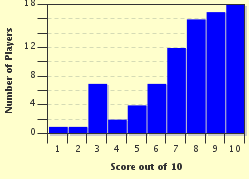Quiz Answer Key and Fun Facts
1. In which decade of great conflict did Bebop emerge as a contrast to the prevailing "Swing" sound of the big bands?
2. In what manner is Bebop considered to differ from the "Swing" sound of the big bands?
3. With the focus on improvisation Bebop innovators abandoned all semblance of Swing music.
4. Two of the prime movers and innovators of the new Jazz sound known as Bebop were trumpet player, 'Dizzy' Gillespie and an alt saxophonist with the nickname "Yardbird" or "Bird". Who is the saxophonist known as "Bird"?
5. The Jazz community embraced the innovation known as Bebop with open arms.
6. Bebop popularised a singing fad that vocalised lyrics written for a previously recorded solo. By what name did this vocalisation come to be called?
7. Hard Bop emerged in the 1950s with a sound that possessed a more emotive quality than its Bebop predecessor. This was achieved by enmeshing Bop with a mix of Blues and what other spiritual sound?
8. One of the early reactions to Bebop came to be known as West Coast Jazz. It is better known by what other term which has connotations to the emotional detachments within the sound?
9. Hard Bop gathered momentum by the mid 1950s with the formation of the "First Great Quintet". This ensemble was put together by which legendary trumpet player best known for his 1959 album "Kind of Blue"?
10. Which record producer, well known for his work with Michael Jackson, released an album in 1995 called "Q's Jook Joint" that endeavoured to combine Bebop with Hip Hop?
Source: Author
pollucci19
This quiz was reviewed by FunTrivia editor
agony before going online.
Any errors found in FunTrivia content are routinely corrected through our feedback system.

